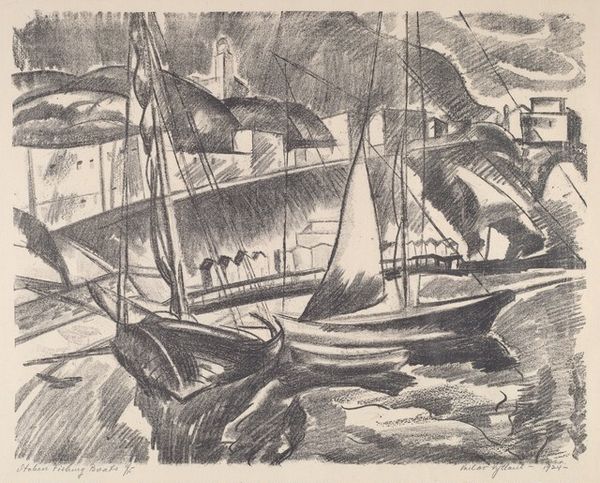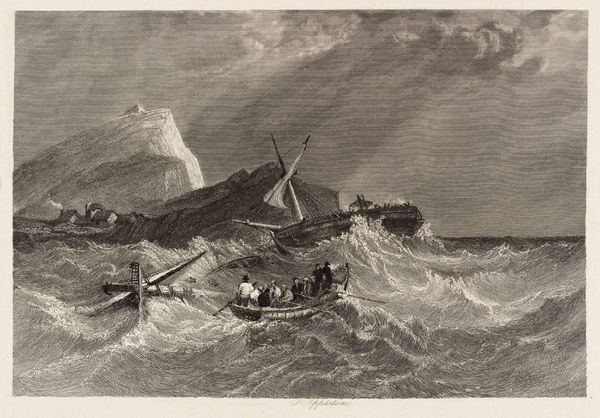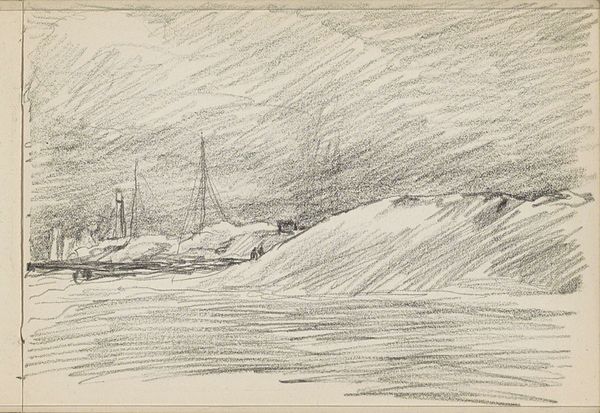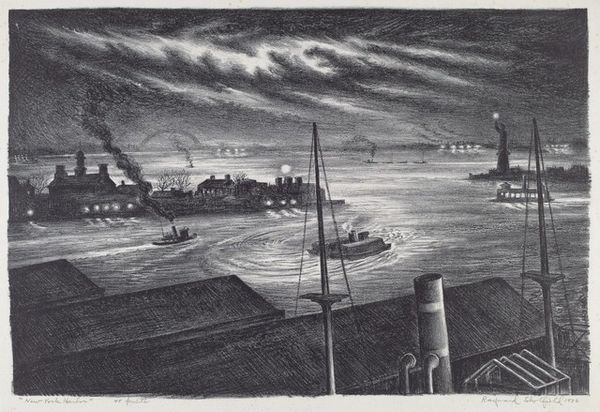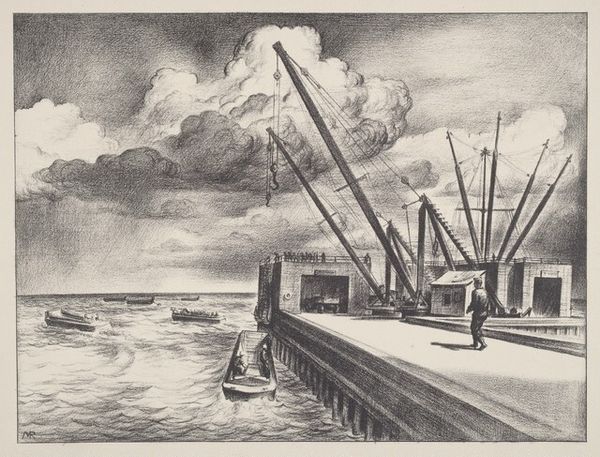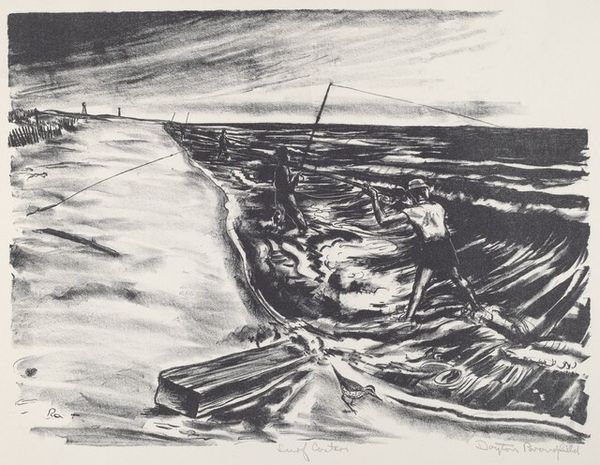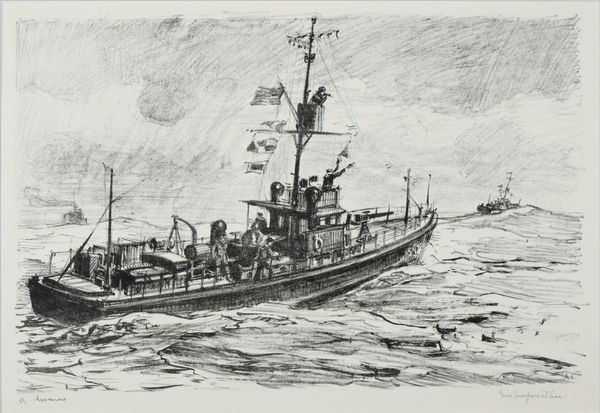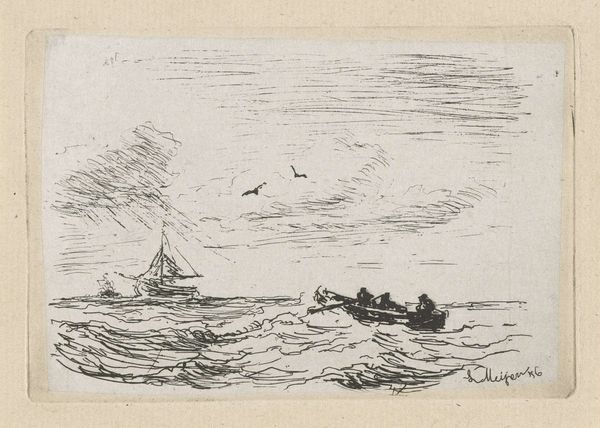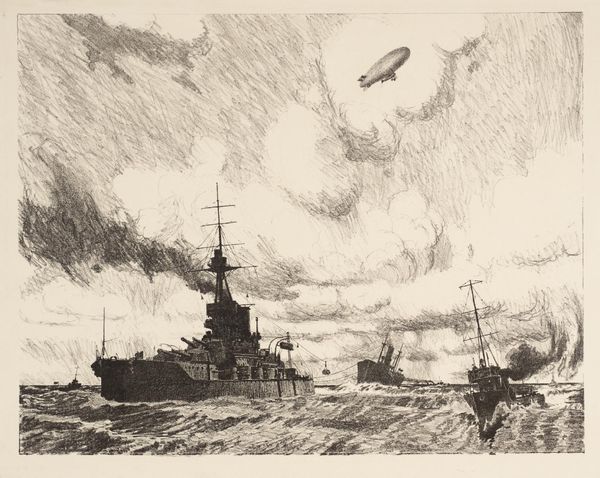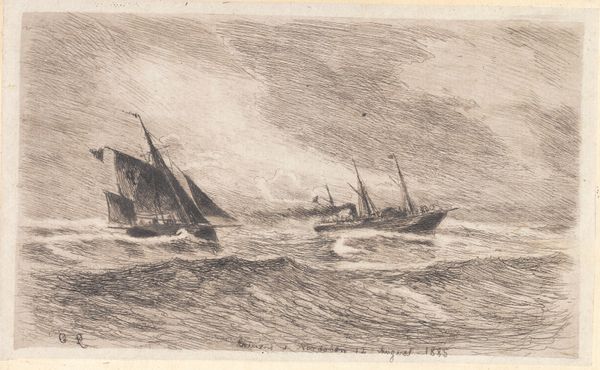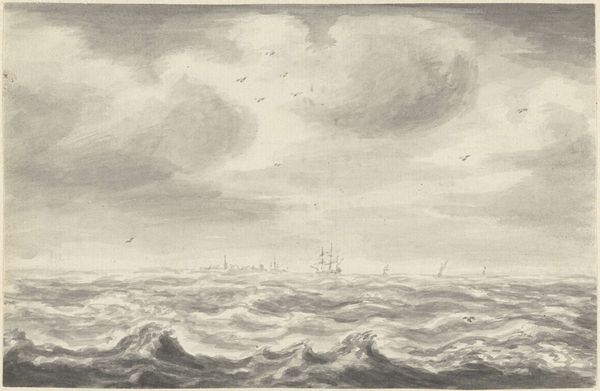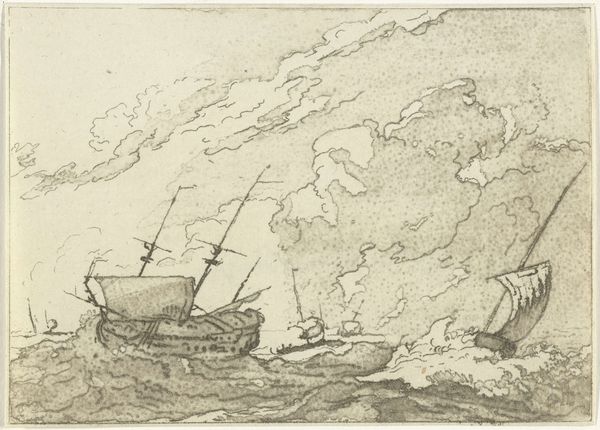
drawing, ink
#
drawing
#
ink drawing
#
pen drawing
#
landscape
#
ink
#
line
#
cityscape
#
modernism
#
realism
Copyright: Public domain US
Editor: Here we have Arthur Lismer's "Submarine Chasers," created in 1919. It's an ink drawing, and it's just so dynamic. The lines create such a sense of movement in the sky and the sea. What’s your take on this piece? Curator: I see this work as a powerful commentary on industry and war. The harsh, almost brutal lines of the ink capture not just the visual of the ship, but also the labor embedded in its construction and function. Think about the physical effort required to build and maintain these vessels, the social context of wartime production, and the sheer volume of materials consumed. Editor: So, you're focusing on the 'how' of it, the making and the using? Curator: Exactly. The medium itself, ink, allows for reproduction. Consider Lismer’s choice – he could have painted this. The print quality allows wider distribution, aligning it with wartime propaganda. It speaks volumes about the mass production necessary for wartime machinery. What's emphasized, then, isn't individual skill, but a collective industrialized effort. What do you make of the skyline? Editor: It feels very oppressive. The dark ink and the aggressive strokes make it feel like it’s bearing down on the ship. Curator: Precisely! That oppressive skyline further reflects the societal pressure of the war effort. Every stroke speaks to a world reshaped by industry, labor, and collective action. Editor: I hadn't thought about it that way, focusing on the materials and process, it reveals a whole other layer to the artwork. Thank you for broadening my perspective. Curator: Absolutely! Considering the production methods offers a really different way to understand not just this artwork but the period as a whole.
Comments
No comments
Be the first to comment and join the conversation on the ultimate creative platform.
